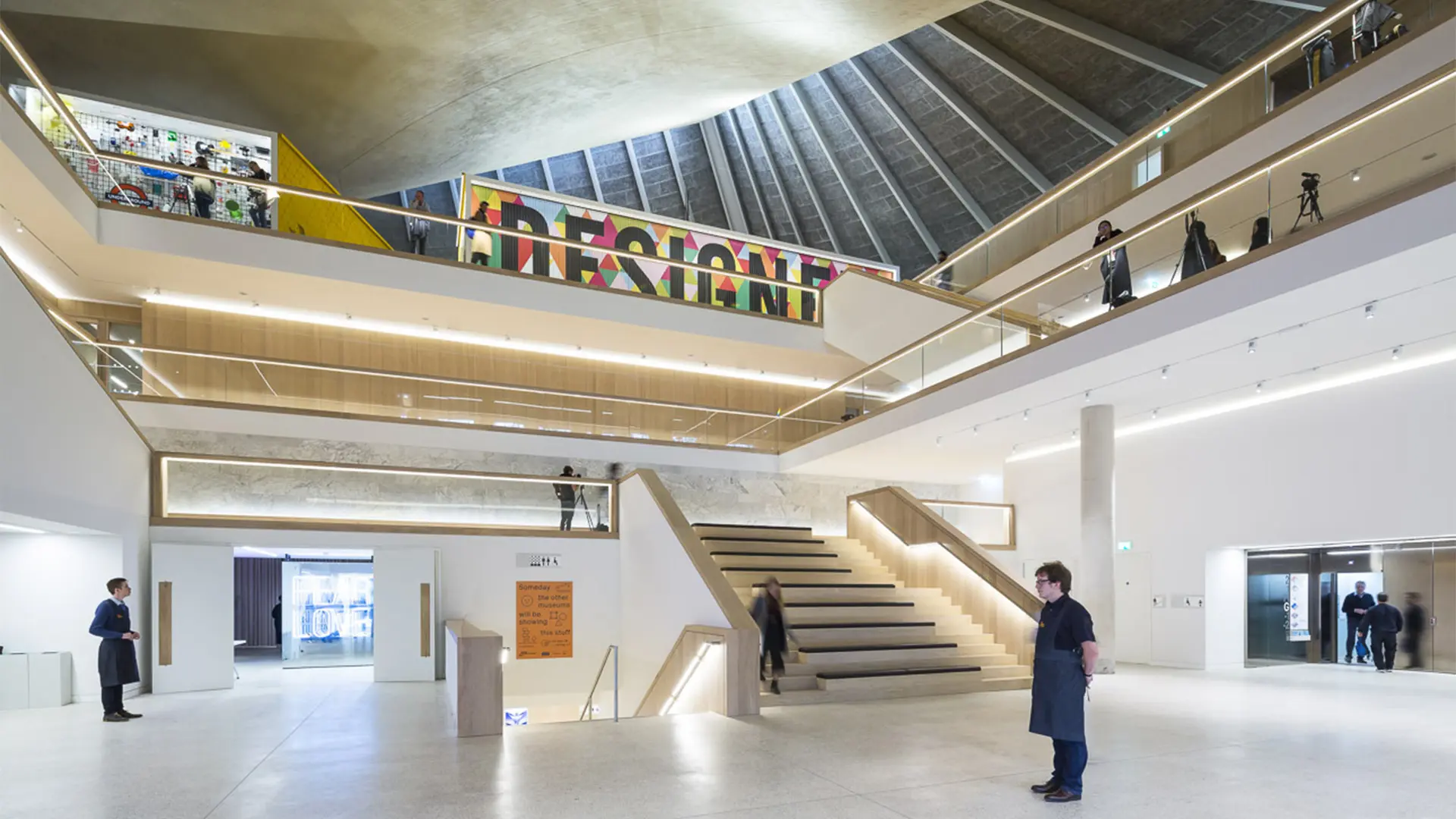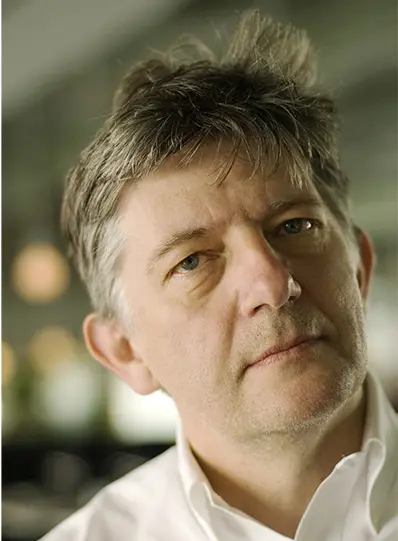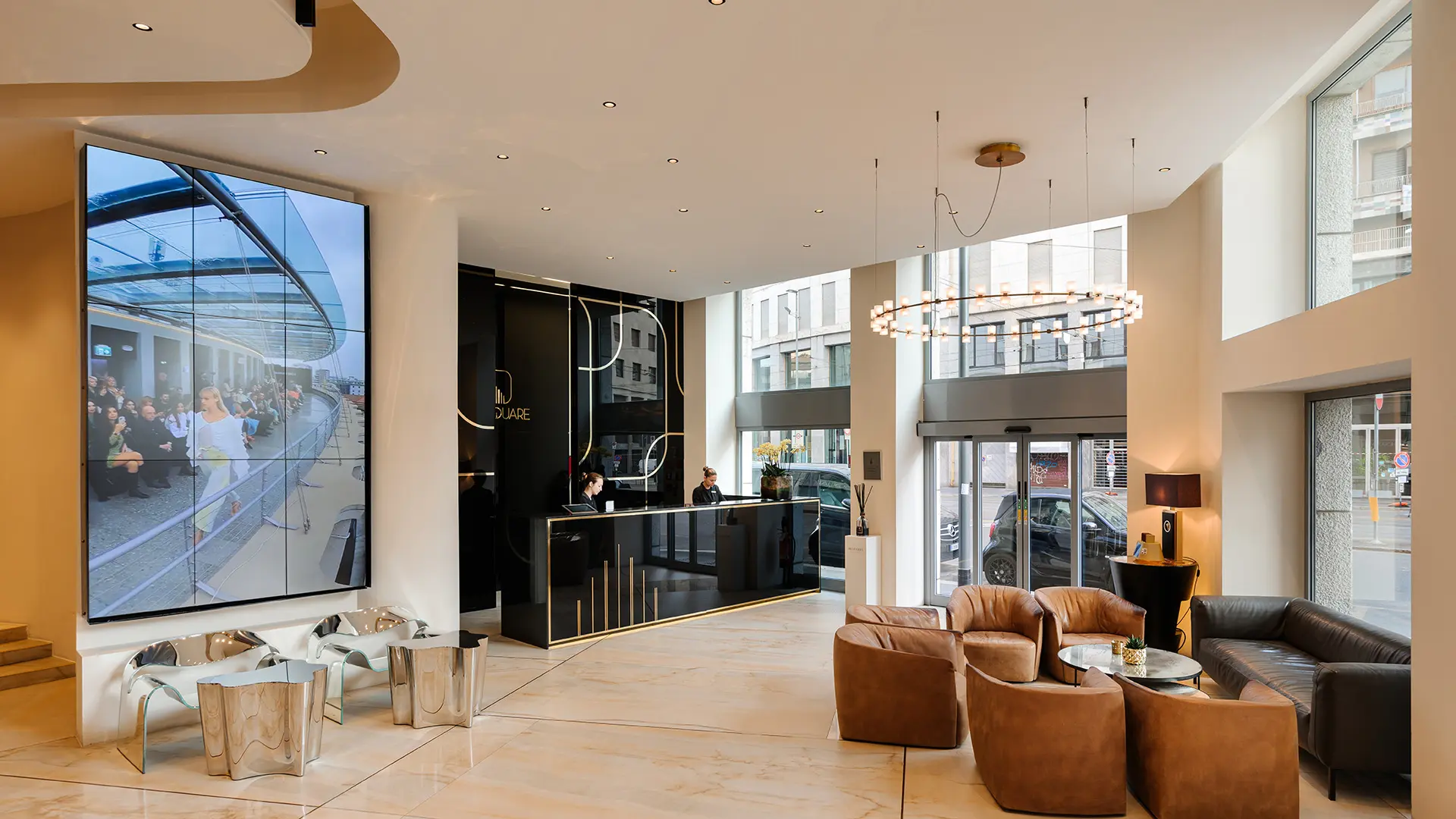In partnership with MiCodmc, a selection of establishments ripe for discovery during the 64th edition of the Salone del Mobile.Milano, from 21 to 26 April 2026

Design museum by John Pawson and OMA - Ph. Luc Boegly and Sergio Grazia
We interviewed the British journalist and curator, who will be among the personalities featured in the series of talks held during the Salone del Mobile.Milano 2024
Deyan Sudjic is one of the world's leading authors, journalists and curators of architecture and design. An architecture graduate, he has never practiced the profession of designer, as he claims “I am not good enough”. However, he is the ideal person to turn to in order to understand the complex and layered universe of design, and the whole system that revolves around it. Throughout his career, he has created and experimented with different and complementary media and platforms, enabling him to speak about design to a wide and varied public, comprising not just academics and scholars, but also a large audience of enthusiasts. At the Salone del Mobile.Milano 2024, on Thursday 18 April, he will be featured in a dialogue with the English architect John Pawson as part of the program of Talks and Round Tables “Drafting Futures. Conversations about Next Perspectives” curated by Annalisa Rosso.
The purpose of the Design Museum is to offer a platform that offers multiple points of view. The museum wants to show that design is not just for specialists. So, the topics, language, and techniques of exposition are meant to touch as many people as possible. I've always been interested in the model of the National Theatre in London, a 1970s building that has a large social space at its center with a café, restaurant and communal areas. It has three different theaters, each designed with a different approach. I feel that museums have to do something similar. So you can see an exhibition to understand the history of design, but at the same time exhibitions of new and experimental ideas, or even insights into iconic figures such as Le Corbusier or Charlotte Perriand. Design is made up of different tribes: people interested in computer design and digital design are not necessarily the same sort of people who look at classics by Charles Eames or Gio Ponti. Devising a good program means bringing these people together and making sure they can also gain an insight into something unexpected.
I've been lucky enough to work on a lot of exhibitions: in Istanbul, Seoul, Copenhagen... It’s been a real privilege. I really enjoyed doing the Architecture Biennale in Venice in 2002. We called it “Next” because it was an examination of real projects that analyzed “concretely, the environment we will be living in in the near future.” Another project I'm attached to was my last exhibition at the Design Museum, devoted to Stanley Kubrick. We were able to study how he physically made his films (he still worked in analogue), how he created his worlds, his fascination with architecture and design... The exhibition enabled a broad public to understand how a project is created, a factor that I see as having a lot of relevance for all forms of design.
We often talk about design as if it were a thing, an object. In reality, design is a method. It's a synthesis that brings together multiple perspectives, and that's what makes it so interesting. Design is a reflection of how projects are carried out – in the broadest sense of the word. It tells who makes them, who uses them, and how they use them. For this reason, at the Design Museum we tried to show objects from three standpoints: that of the Designer, the Maker and the User. This is an age when objects are less pervasive than a few decades ago. Many have been replaced by programs or applications. Yet, people still want to own things that embody memories or reflect their personality. We find ourselves in a paradoxical period, when we have the feeling that we should not create too many new objects, and we should never knock down an architectural work unless there are some very good reasons. Some designers manage to fully embody this paradox. I'm thinking of the Formafantasma studio, which explores the dark side of industrial production and the degeneration of production systems, but at the same time it also has the ability to create refined and elegant furnishings. Today, no one is pure and we all carry within us the need for critical reflection and the urge for consumption.

Deyan Sudjic - Ph. Muhsin Akgün
I've come here almost every year since 1977, when it was still in the city, and it was still held in September. It has always been an essential place to be. It can prove exhausting. And it can be hard to understand what it means to first-time visitors. Sometimes it looks like a monster. Sometimes it appears like a special revelation. To me, it is extraordinary that it has managed to remain relevant by never being complacent and understanding that the world around us is changing. So in order to remain relevant, the Salone also has to change. It is interesting to look at what has made Milan such an important center for global design. Certainly the fact that in Brianza there is a concentration of manufacturers, and in Milan a large group of magazines and companies engaging with the world of communication. It is also due to the fact that there are numerous designers from around the world, and different schools. I also think about when we believed that Covid would make the concentration of so many people obsolete. That didn’t happen. People still need to meet physically. There are still many questions open and issues needing to be addressed. Sometimes too much success can also be a problem, and an excessive turnout of people can be a problem in the same way as a low turnout...
Going back to talk to someone you've worked with for years is very interesting, because you reflect on aspects of their work that you hadn't thought of before. People who don't know him believe that John is some kind of righteous fanatic, who believes in eliminating everything about a home. This is a completely false assumption. John is not a person who imposes his vision of what architecture should be. He listens and tries to imagine what life will be like in the spaces he designs. So I wanted to bring out this point. And then he has worked for some very interesting clients: from Calvin Klein to Bruce Chatwin or Ian Schrager. He has worked with another master like Shiro Kuramata. He has had a very full life, lived well, and it was really interesting to document it.


 Exhibitions
Exhibitions








